TV screen protector: what is it and how to choose?
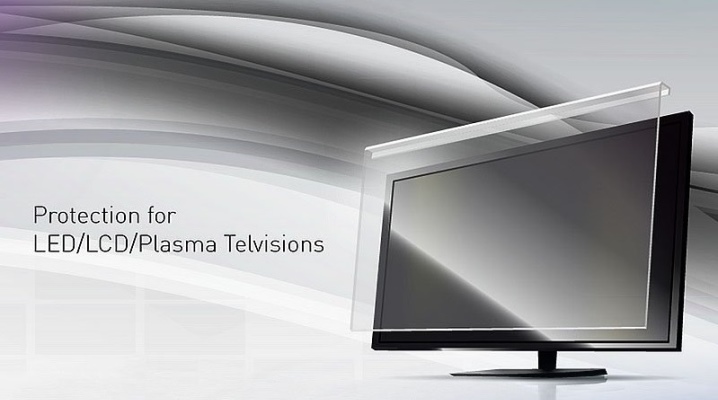
After buying a TV, each owner may have a question about protecting the screen from various mechanical damages, especially if a child is growing up in the family, whose pranks are impossible to keep track of. Here a special protective device will come to the rescue, protecting the screen from external influences. In this article, we will get acquainted with the characteristics and features of such a protective component.
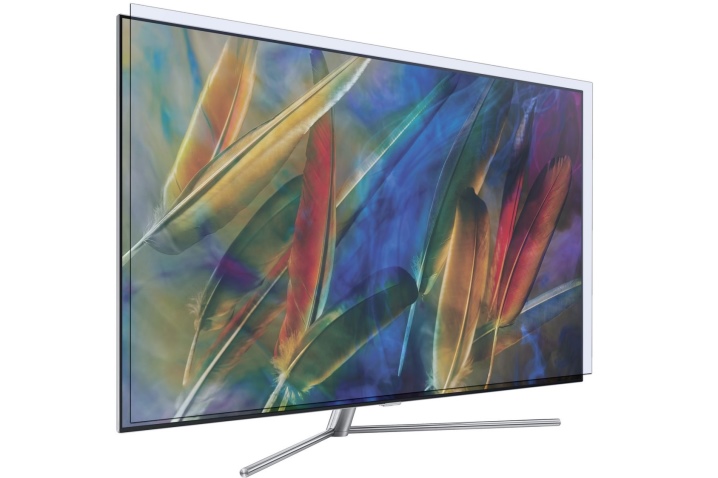
Peculiarities
A protective screen for a TV is a kind of additional screen made of transparent and durable material, which serves to protect equipment from various mechanical damage, moisture ingress during operation and from various unforeseen circumstances. Having installed such an accessory, you can not be afraid to break an important part of the TV. Even if there was a shock, the device will take the load on itself, while securing the equipment.
Thanks to the silicone pads, a gap remains between the equipment and the protection, due to which the TV screen remains invulnerable. But at the same time, the additional detail itself remains invisible.
This accessory is easy to use. It is easy to assemble and dismantle.
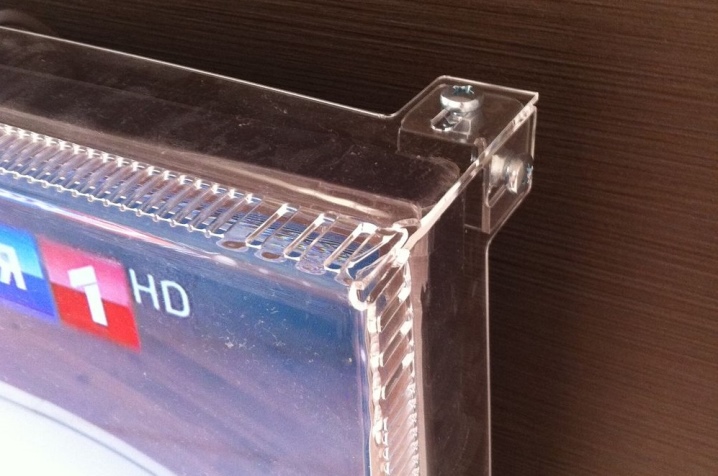
Advantages and disadvantages
Let's note the main pros and cons of the protective device.
Pros:
- an additional accessory helps to protect the equipment screen from children and animals;
- prevents the ingress of food residues and other contaminants in case of operation in crowded places (in cafes, restaurants, etc.);
- protects against the formation of a fat layer on the screen when using the TV in the kitchen;
- provides protection against moisture ingress when installing equipment in bathrooms or swimming pools;
- prevents dust from settling on the TV screen;
- allows you to protect the TV from direct sunlight.
Minuses:
- additional expenses will be required to purchase protection, especially if it is made of high quality material;
- the likelihood of buying a low-quality product in a store, because no one is immune from this;
- when using cheap material, scratches may remain after wiping the accessory;
- will have to spend extra time installing protection.

Materials (edit)
The TV screen protector is made using the following materials:
- plastic;
- glass;
- polycarbonate;
- acrylic.
Let's consider each option in more detail.
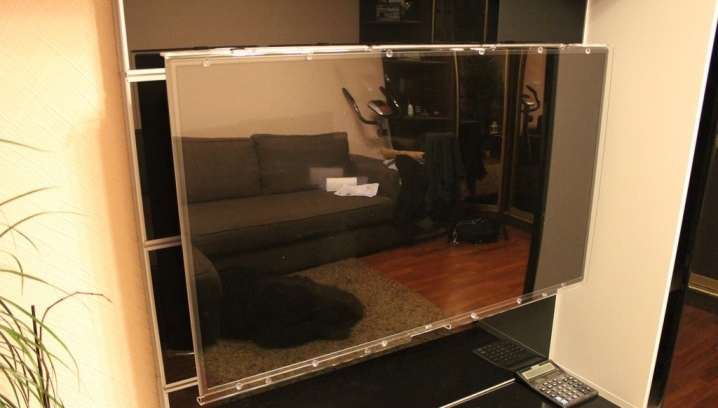
Plastic model
This material is not very durable, so it will not work to organize invulnerable protection from it.
Pros:
- helps to reduce the amount of glare;
- increases the contrast of the picture.
Minuses:
- does not help to ensure the necessary electromagnetic safety of the workplace;
- in a short time, cloudiness may appear on the protective part;
- subject to mechanical damage.
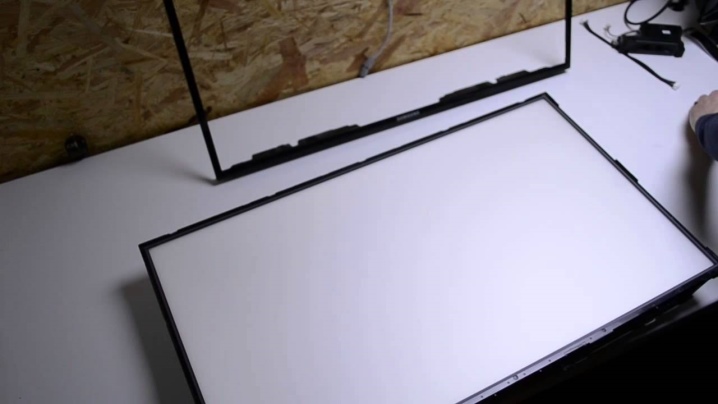
Glass option
This material is much stronger than the previous type.
Pros:
- has anti-glare function;
- has a high contrast image;
- allows you to improve the quality of the picture.
The disadvantages include the fact that there is no protection against electromagnetic radiation.
But there are glass screens with a full protective function, which improve the visual data of the picture, contrast, reduce glare and have electromagnetic protection.

Polycarbonate screen
Solid polycarbonate is highly durable compared to other types.
Pros:
- is light in weight, unlike glass;
- easily installed on the surface of equipment;
- gives an excellent image;
- has protection against electromagnetic radiation.
Minuses:
- insufficient abrasion resistance;
- individual care is required (only a special wiping sponge is suitable to avoid scratches).
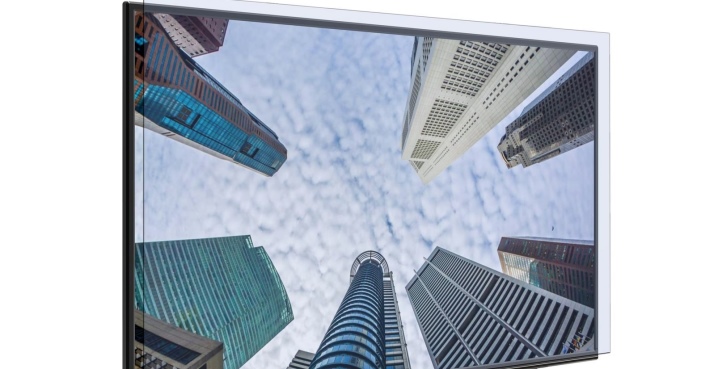
Acrylic protection
This material is organic glass with a high transparency.
Pros:
- after installing the accessory, the brightness of the picture does not change;
- there is a possibility of viewing in 3D mode;
- with proper installation, the screen is able to withstand strong mechanical stress;
- does not spoil the appearance of the TV;
- long service life.
Minuses:
- high cost of the finished accessory;
- when the equipment is located opposite the window, glare may appear in the daytime;
- dust can settle on the back of the protective screen, which can be removed using a jet of water to prevent electrification of the glass.
At the factory, an individual polarizing film is applied to the screens of LED TVs, creating bright, clear pictures in 3D.
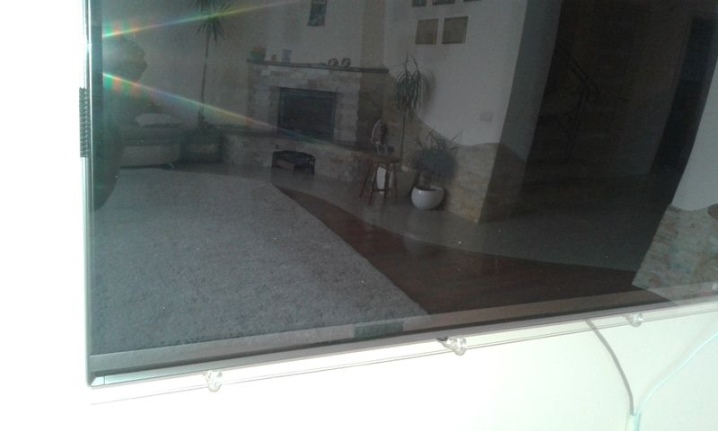
Selection criteria
Next, let's figure out what the nuances it is worth paying attention when choosing a protective screen for your TV.
- Price quality. It is necessary to take into account the ratio of cost and quality of the selected model (a quality accessory cannot be cheap).
- Operating conditions. It is necessary to take into account the conditions in which the equipment will be used in order to choose the appropriate option.
- Dimensions. All parameters should be calculated so that the size of the protective device matches the data of the TV.
- The origin of the goods. Before making a purchase, you need to demand a quality certificate from the seller in order to avoid purchasing a fake.
- An important point is the selection of the fastening of the protective model.
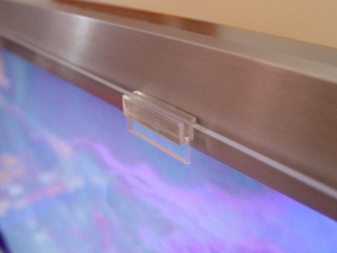
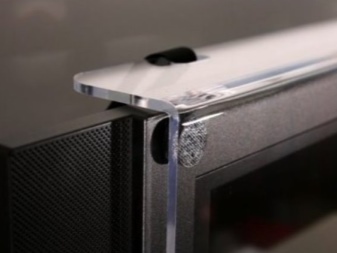
How to install?
You can do the work on installing a protective screen on a TV with your own hands. nn6
- It is necessary to purchase the selected material.
- Carry out all required measurements.
- Cut the desired part from a single piece of material using an electric jigsaw.
- Along the perimeter of the TV, using 2-sided tape, glue circles of foam rubber no more than 5 mm in diameter.
- Fix the manufactured protective screen onto the rubber parts installed.
Now, having an idea of such an accessory, and knowing about the possibility of self-installation, it will be possible to solve the problem of choosing and fixing the considered protective part.
How to install a protective screen on a TV is shown in the following video.













The comment was sent successfully.